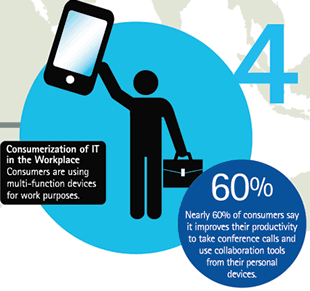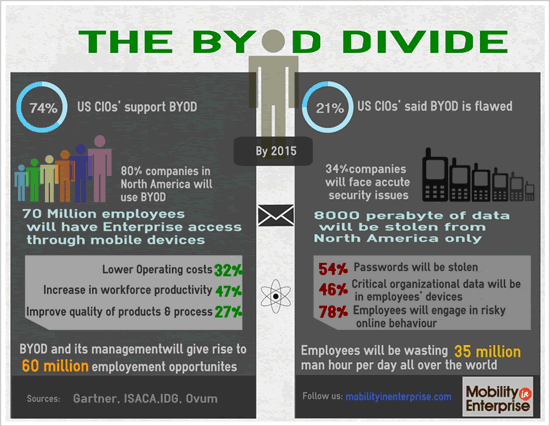Digital business looks at the disruptive and transformational impact and potential of digital technologies across several business functions and in business overall. But most of all it should also look at people. Just think about how BYOD (Bring Your Own Device) and consumerization change the way we work.

The main drivers for the disruptive impact of digital technologies on business functions are seldom organizations themselves. Consumerization and BYOD, for instance, are driven by workers. People like you and me.
Most enterprises are always trying to close the gap between the ways they conduct business and are organized on one hand and the rapidly changing digital ecosystem on the other. It doesn’t have to be like that. There are ample examples or companies that pro-dapt instead of adapt.
It requires a collaborative social business mindset but most of all an organization that is able to pro-spond rather than respond and is characterized by a higher level of connectivity in all areas. Digital transformation indeed.
BYOD and the disconnect between organization and human behavior
The adoption of mobile devices and the fact employees want to use them at work (what BYOD and consumerization essentially are all about) is an example of how we respond to change instead of anticipating it.
There is a clear gap between what people do and businesses do. This doesn’t mean that we need to allow everything but at least there must be a debate and attempt to find a solution.
By having a holistic view on digital evolutions and most of all changes in the ways people behave and work, we can see the roots of tomorrow’s changes. Today’s futurist is really a very up-to date analyst with common sense and an all-round profile. More importantly: the futurist can be your internal team, assisted by external partners, collaborating and exchanging ideas and information effectively. Innovation and pro-daption have to be enabled. The disconnect/gap between how we function as organizations and managers on one hand and the customer reality on the other keeps growing. Closing it is the challenge for the increasingly digital business.
Consumerization and BYOD are striking examples of this. First movers who had their BYOD policies in place rapidly, reaped the fruits of their early investments and strategies. They looked at the benefits and challenges of BYOD and consumerization before their competitors did, determined the goals of their BYOD approach and went ahead. Today, we see the positive impact in several domains such as collaboration and sales, two proven effects of organizations that did it right. The other way around, in other areas, despite BYOD policies and early investments, we see negative impacts, mainly due to the human element.
Closing the gaps
Obviously, no one can predict the future. However, we can prepare for it. This doesn’t mean we have to embrace the potential impact of each single disruptive technology as soon as it is “out”.
It does mean that we need to look at it from different angles and business functions in a strategic way. Sometimes moving later and learning from the mistakes of early movers can be a strategic decision too/
There are several gaps to close in various business functions where digital technologies play an increasing role. The question is whether you will pro-dapt and reap the benefits without falling in the hype trap or adapt and probably miss out on competitive advantages but at the same time maybe playing it safe. It’s the balance of innovation, risk, success and potential failure we all have to take.
What BYOD and consumerization show is that the digital business watches the behavior of people using digital devices and technologies and has the ability to turn the consequences into tangible benefits sooner than the others. How we continue to move towards BYOx (Bring Your Own Anything) will depend on how you and your teams will use it. Purpose, pertinence, processes, people and practical. Always. Looking at recent Ovum findings it will not just go away tomorrow, well on the contrary. The future? Watch what happens today and anticipate on the impact of technologies yet to come.
And most of all: have a holistic view, looking at all the pros and cons but look at the reality of your business, people and customers.


